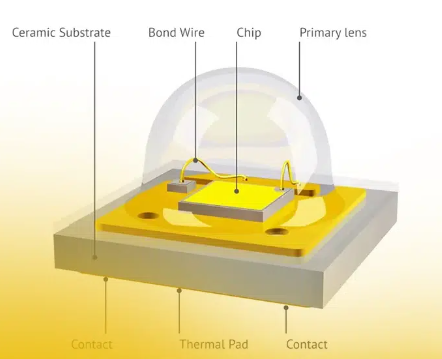Report: LEDs Cut 570 Million Tons of CO2 in '17
The efficiency of LEDs compared to traditional incandescent and fluorescent lighting is one of the most highly touted benefits of the technology. According to a new report by IHS Markit, the use of LEDs to light buildings and outdoor spaces reduced the total carbon dioxide emissions of lighting by some 570 million tons in 2017.
This reduction, roughly equivalent to 162 coal-fired power plants, enabled LED component and lighting companies to reduce the global carbon footprint by about 1.5 percent this year, IHS Markit(London) estimates.
Jamie Fox, a principal analyst for the market research house's lighting and LED group, believes LEDs have enabled LED component and lighting companies to transform their industry. These companies, he said, "are fighting climate change much more effectively than other industries, and they should be given credit for it."
Fox added: "Unlike in other industry sectors, workers at LED companies can honestly say that by selling more of their products, they are helping to reduce global warming."
LED lighting uses an average of about 40 percent less power than fluorescent and 80 percent less than incandescents to produce the same amount of light, according to Fox. He expects the impact of LEDs on the global carbon footprint to become more pronounced as more LEDs are installed around the world.
Based on IHS' analysis of market share data for LED component suppliers, Nichia Corp., a Japanese supplier of LEDs, can saved the most carbon overall. The firm accounted for about 10 percent of all carbon dioxide reduced through the use of LEDs in 2017, or roughly 57 million tons, according to IHS.
Cree followed Nichia with 8 percent, while Lumileds, Seoul Semiconductor, MLS, Samsung and LG Innotek each have a share in the range of 4 percent to 7 percent, according to IHS.
在线留言询价
- 一周热料
- 紧缺物料秒杀
| 型号 | 品牌 | 询价 |
|---|---|---|
| MC33074DR2G | onsemi | |
| RB751G-40T2R | ROHM Semiconductor | |
| CDZVT2R20B | ROHM Semiconductor | |
| TL431ACLPR | Texas Instruments | |
| BD71847AMWV-E2 | ROHM Semiconductor |
| 型号 | 品牌 | 抢购 |
|---|---|---|
| ESR03EZPJ151 | ROHM Semiconductor | |
| IPZ40N04S5L4R8ATMA1 | Infineon Technologies | |
| BP3621 | ROHM Semiconductor | |
| STM32F429IGT6 | STMicroelectronics | |
| TPS63050YFFR | Texas Instruments | |
| BU33JA2MNVX-CTL | ROHM Semiconductor |
AMEYA360公众号二维码
识别二维码,即可关注



























